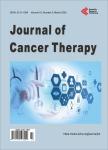Human Adipose Stem Cells Exposed to Gamma Radiation and Inactivity (Stasis) Show Increased Cancer Markers and DNA Damage. A Preliminary Assessment of a Pharmaceutical Formulation to Reverse These Effects and Its Applications for Medical Radiotherapy and the Space Industry
Human Adipose Stem Cells Exposed to Gamma Radiation and Inactivity (Stasis) Show Increased Cancer Markers and DNA Damage. A Preliminary Assessment of a Pharmaceutical Formulation to Reverse These Effects and Its Applications for Medical Radiotherapy and the Space Industry作者机构:Clinical Stem Cells PL Sydney Australia
出 版 物:《Journal of Cancer Therapy》 (癌症治疗(英文))
年 卷 期:2022年第13卷第1期
页 面:7-19页
学科分类:1002[医学-临床医学] 100214[医学-肿瘤学] 10[医学]
主 题:Astronauts DNA Gamma Radiation Radiotherapy Space Medicine Space Mining Anti-Aging Stem Cells
摘 要:Gamma radiation exposure and physical inactivity occur in medical radiotherapy patients and astronauts resulting in substantial deterioration of their health. At the molecular level, the radiation triggers elevated markers for DNA double-strand breaks and tumorigenicity. Cell stasis is a potential phenomenon associated with low physical activity in recovering cancer patients and astronauts. This preliminary study assessed parameters of stasis and gamma radiation on human adipose stem cells (ADSCs) that have important regenerative functions for the body. A prototype pharmaceutical formulation (PF) was tested to prevent and reverse the effects of radiation and stasis. ADSCs were subjected to short-term (1 - 5 days) and longer-term (8 - 25 days) stasis and radiation with a combined total exposure of alpha, beta and gamma radiation measured at 455 microSv/hr on the Geiger counter. Cell health markers were grouped for characteristics of cellular health (annexin, H2A.X, NO, ROS) and tumorigenicity potential (P13, Ki67, MAPK) that were measured with flow cytometry. Results showed PF to improve cell health in days 1 - 5 compared to stasis (p = 0.01) and radiation (p = 0.02), and PF reduced tumorigenicity compared with stasis (p = 0.018) and radiation (p = 0.03). For longer exposure (8 - 25 days) PF improved cellular health compared with stasis (p = 0.038) and showed a non-significant trend for decreasing radiation effects (p = 0.07). There was decreased tumorigenicity compared with stasis (p = 0.003) and radiation (p = 0.005). This preliminary evaluation of the PF showed it to have 88% (66/75) positive assay results (p 0.00001 Chi-square) indicating three promising beneficial effects: 1) prevent cell/DNA damage, 2) reduce cancer risk, and 3) recover damaged and precancerous stem cells. The PF could have imp



